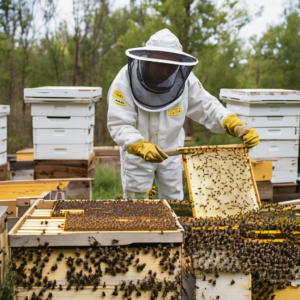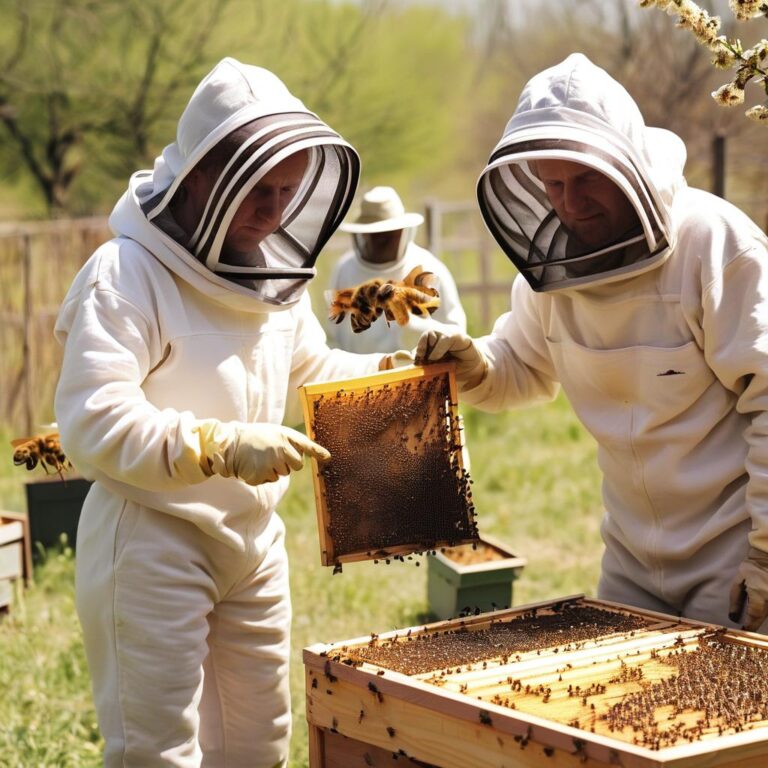Bee Keeping
Beekeeping, or apiculture, has a long and rich history in the United States. It is an essential practice not only for honey production but also for pollination, which is vital for agricultural success. Whether you are an aspiring beekeeper or just curious about this fascinating field, this guide will provide you with a comprehensive understanding of beekeeping practices in the USA.
1. History of Beekeeping in the USA
Beekeeping in the USA dates back to the early 17th century when European settlers brought honey bees to North America. These bees, known as European honey bees (Apis mellifera), adapted well to the American environment and became crucial for pollination and honey production.
2. Types of Beekeeping
Hobbyist Beekeeping:
- Small-scale beekeeping, typically involving a few hives.
- Focuses on personal honey consumption, pollination for home gardens, and learning about bee behavior.
Commercial Beekeeping:
- Large-scale operations with hundreds or thousands of hives.
- Primary goals include honey production, pollination services, and breeding bees for sale.
Urban Beekeeping:
- Practiced in cities, often on rooftops or small urban gardens.
- Aims to increase local pollination and promote awareness of bee conservation.
3. Essential Equipment for Beekeeping
Bee Hives:
- Langstroth Hive: The most common hive type in the USA, known for its modular design and ease of management.
- Top-Bar Hive: Popular among hobbyists, it offers a more natural beekeeping approach.
- Warre Hive: Focuses on minimal intervention and is designed to mimic the bees’ natural environment.
Protective Gear:
- Beekeeping Suit: Full-body suits to protect from stings.
- Gloves: Essential for hand protection.
- Veil: Protects the face and neck area.
Tools:
- Smoker: Helps calm the bees during hive inspections.
- Hive Tool: A multi-purpose tool for prying apart hive components and scraping.
- Bee Brush: Gently removes bees from frames during inspections.
4. Starting a Beekeeping Operation
Location:
- Choose a sunny, dry location with ample flowering plants nearby.
- Ensure there is a water source for the bees.
- Consider local regulations and obtain necessary permits.
Bee Acquisition:
- Purchase bees from reputable suppliers or local beekeepers.
- Common methods include package bees, nucleus hives (nucs), or full colonies.
Hive Setup:
- Assemble and position hives before introducing bees.
- Ensure proper ventilation and protection from predators.
5. Bee Colony Management
Hive Inspections:
- Conduct regular inspections to monitor the health of the colony.
- Check for signs of diseases, pests, and the presence of the queen.
- Ensure there is enough space for brood rearing and honey storage.
Swarm Prevention:
- Manage hive space to prevent overcrowding.
- Split strong colonies to create new hives.
Feeding:
- Provide supplemental feeding during times of nectar dearth.
- Use sugar syrup in spring and fall, and pollen patties if necessary.
6. Common Challenges in Beekeeping
Pests and Diseases:
- Varroa Mites: The most significant pest affecting honey bees in the USA. Regular monitoring and treatment are crucial.
- Small Hive Beetle: Can cause significant damage to hives if left unchecked.
- American Foulbrood: A bacterial disease requiring strict management and sometimes destruction of affected hives.
Environmental Factors:
- Climate Change: Affects flowering patterns and nectar availability.
- Pesticides: Harmful chemicals can impact bee health and hive productivity.
7. Pollination Services
Importance:
- Honey bees play a critical role in pollinating many crops, contributing billions to the agricultural economy.
- Beekeepers often move hives to different locations to provide pollination services for crops like almonds, apples, and blueberries.
Practice:
- Migratory Beekeeping: Transporting hives across the country to follow pollination contracts.
- Coordination with Farmers: Ensuring bees are placed at optimal times for crop pollination.
8. Honey Production and Harvesting
Honey Flow:
- Occurs during periods of abundant nectar availability.
- Beekeepers must ensure bees have enough space to store honey.
Harvesting:
- Use a bee escape board or a smoker to clear bees from honey supers.
- Extract honey using an extractor and filter out impurities.
- Store honey in clean, dry containers to prevent fermentation.
Conclusion
Beekeeping in the USA is a rewarding practice that contributes significantly to agriculture and the environment. Whether you’re a hobbyist or a commercial beekeeper, understanding the intricacies of hive management, pest control, and honey production is essential for success. By following best practices and staying informed about new developments, you can ensure your beekeeping venture thrives.
Beekeeping not only supports biodiversity but also offers a unique opportunity to connect with nature. As the awareness of bee conservation grows, more people are turning to beekeeping to make a positive impact. If you’re considering joining this fulfilling endeavor, there’s no better time to start than now.


